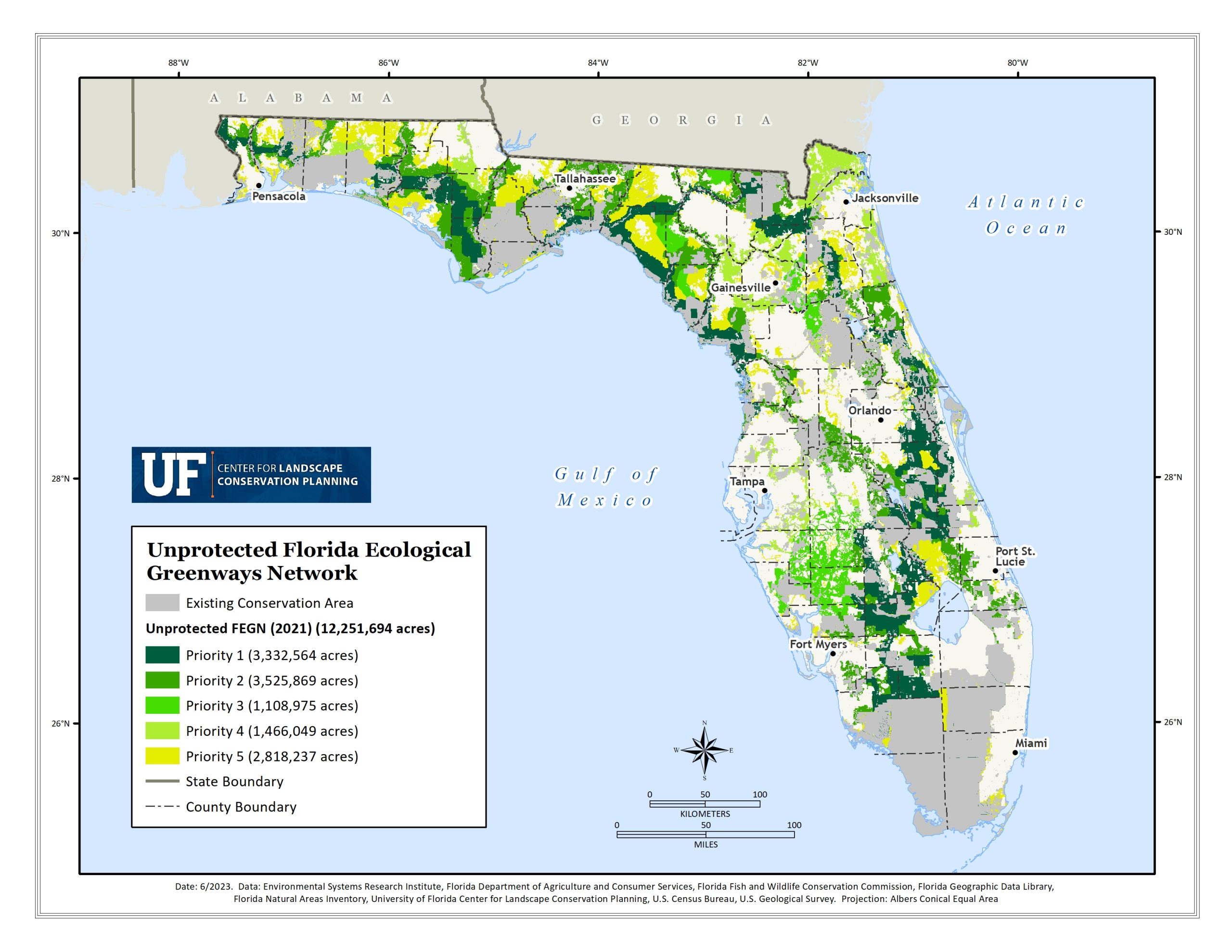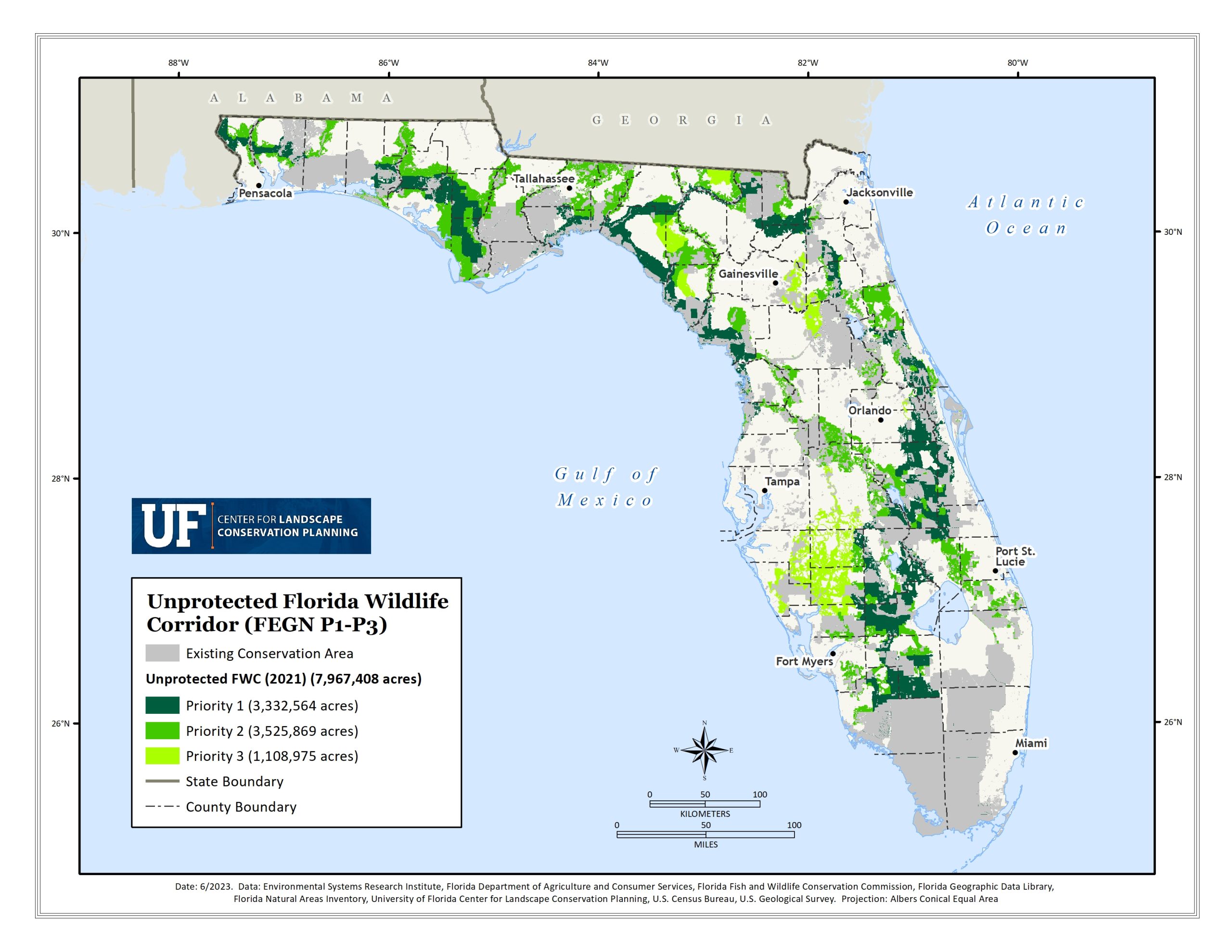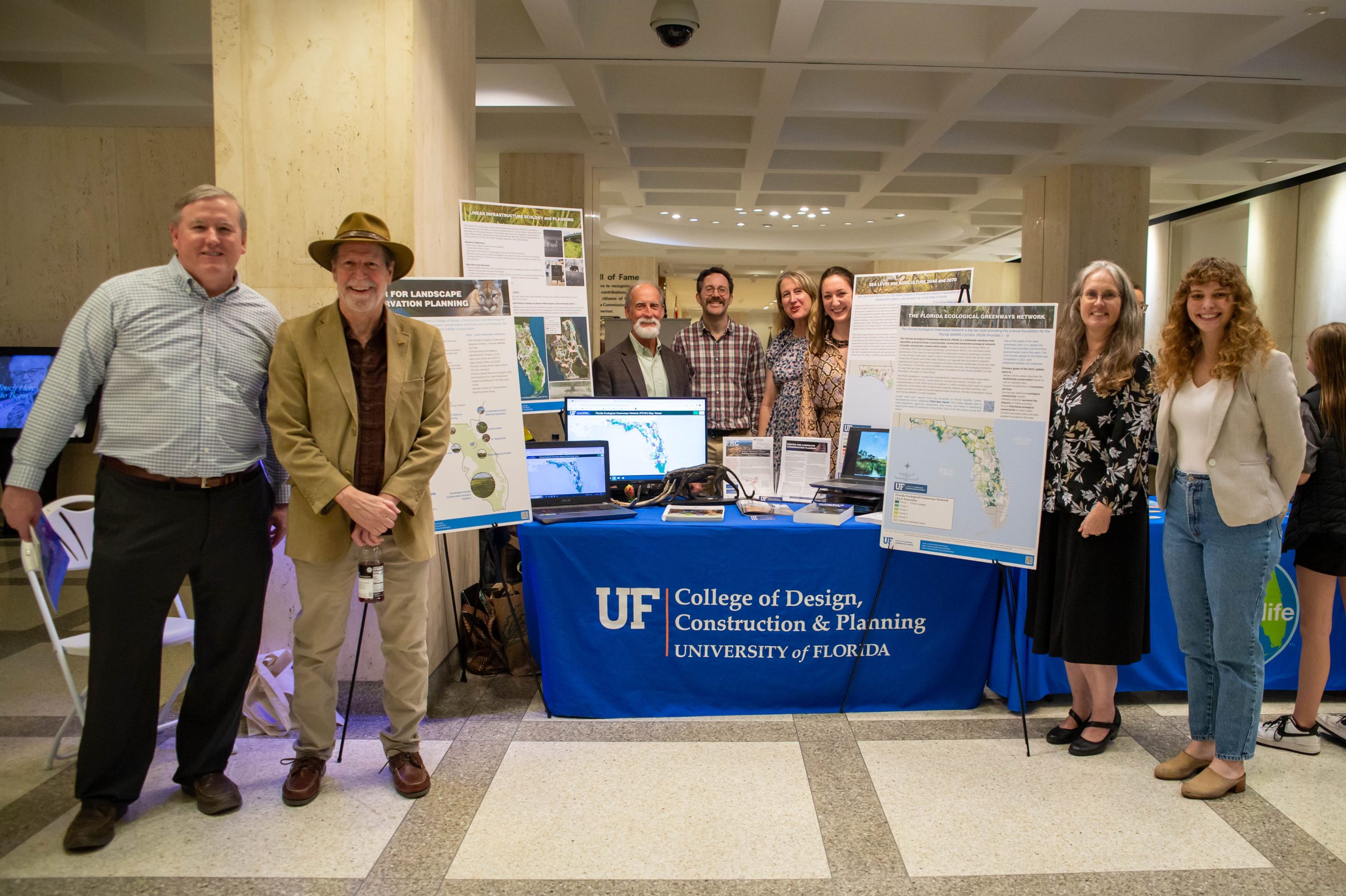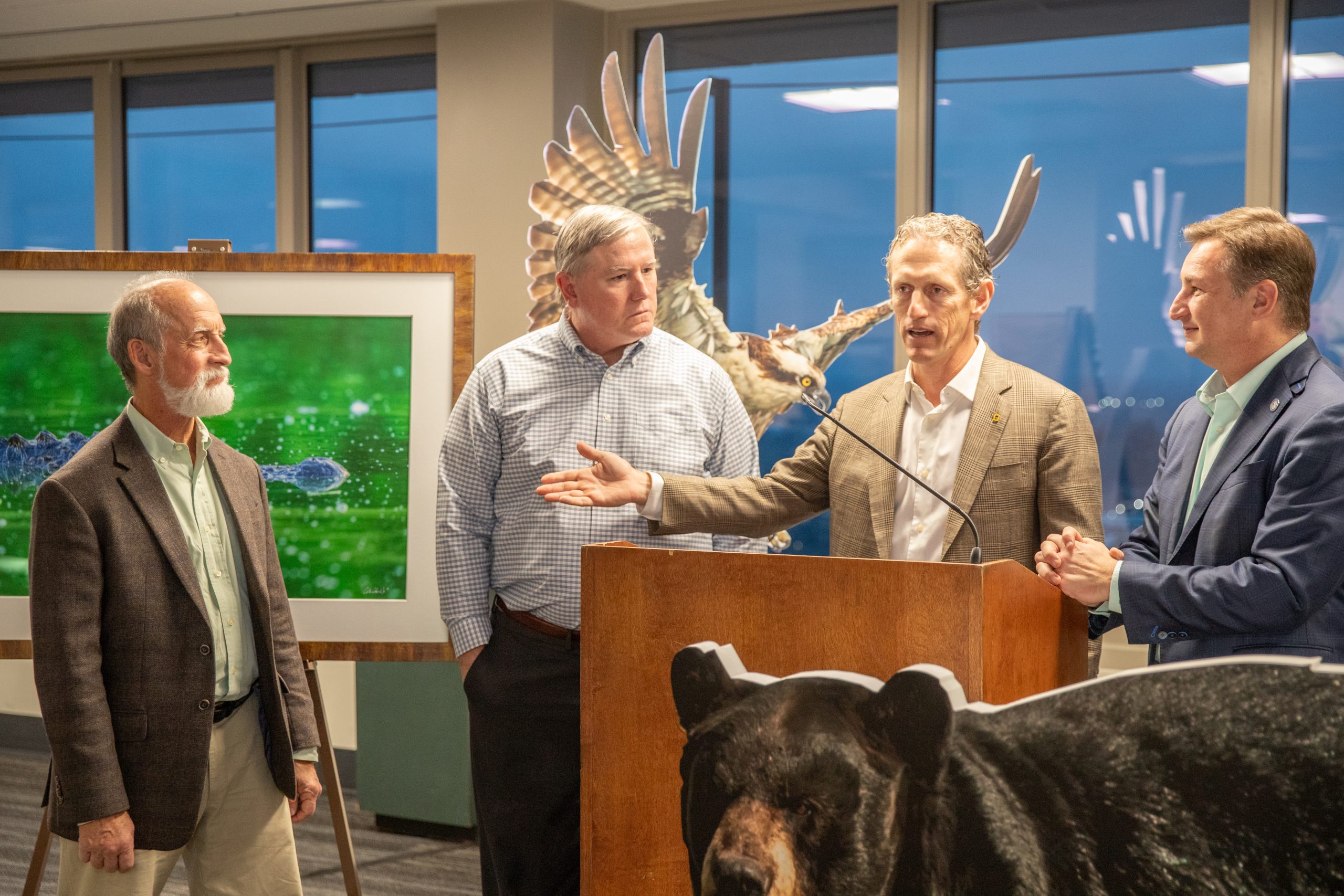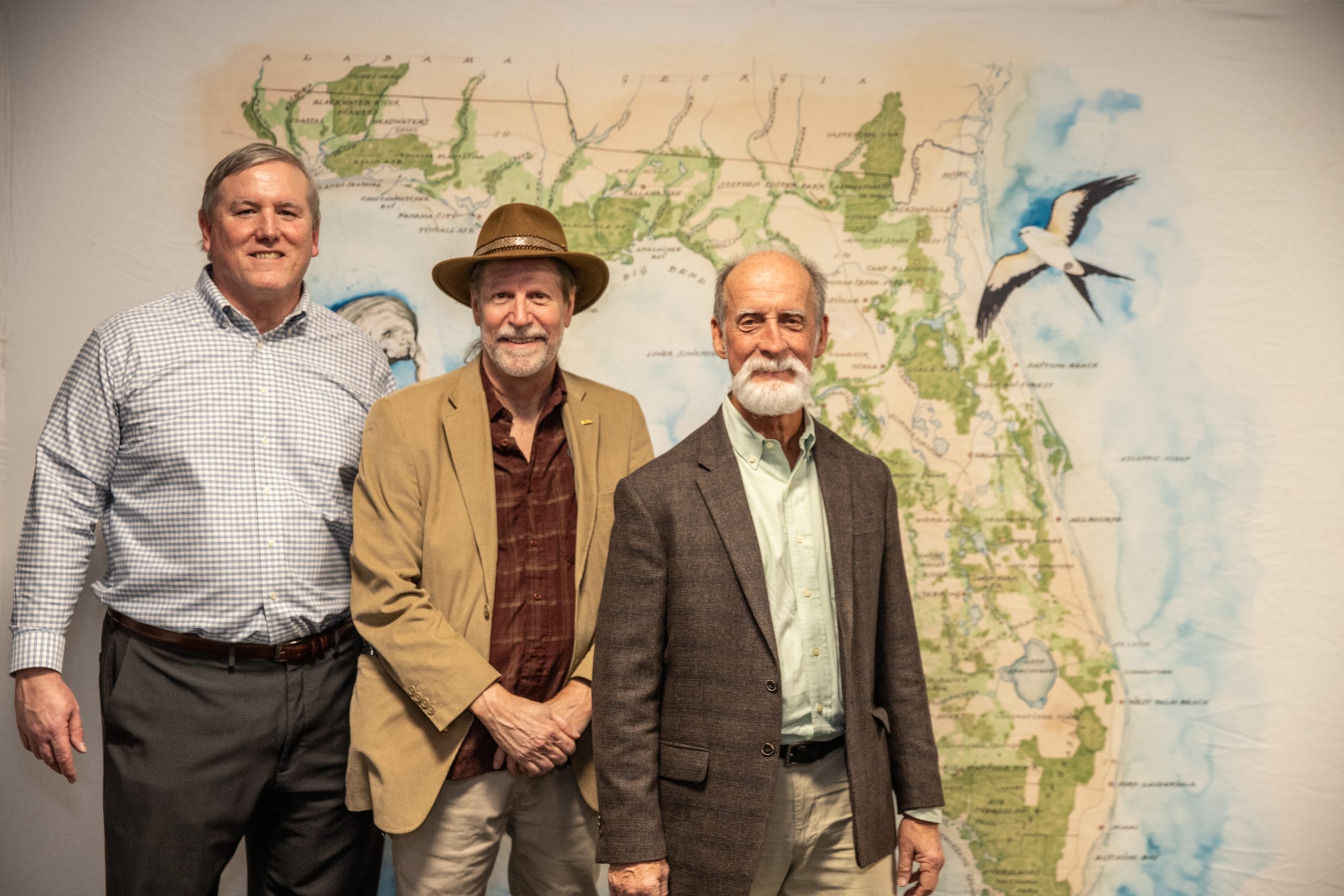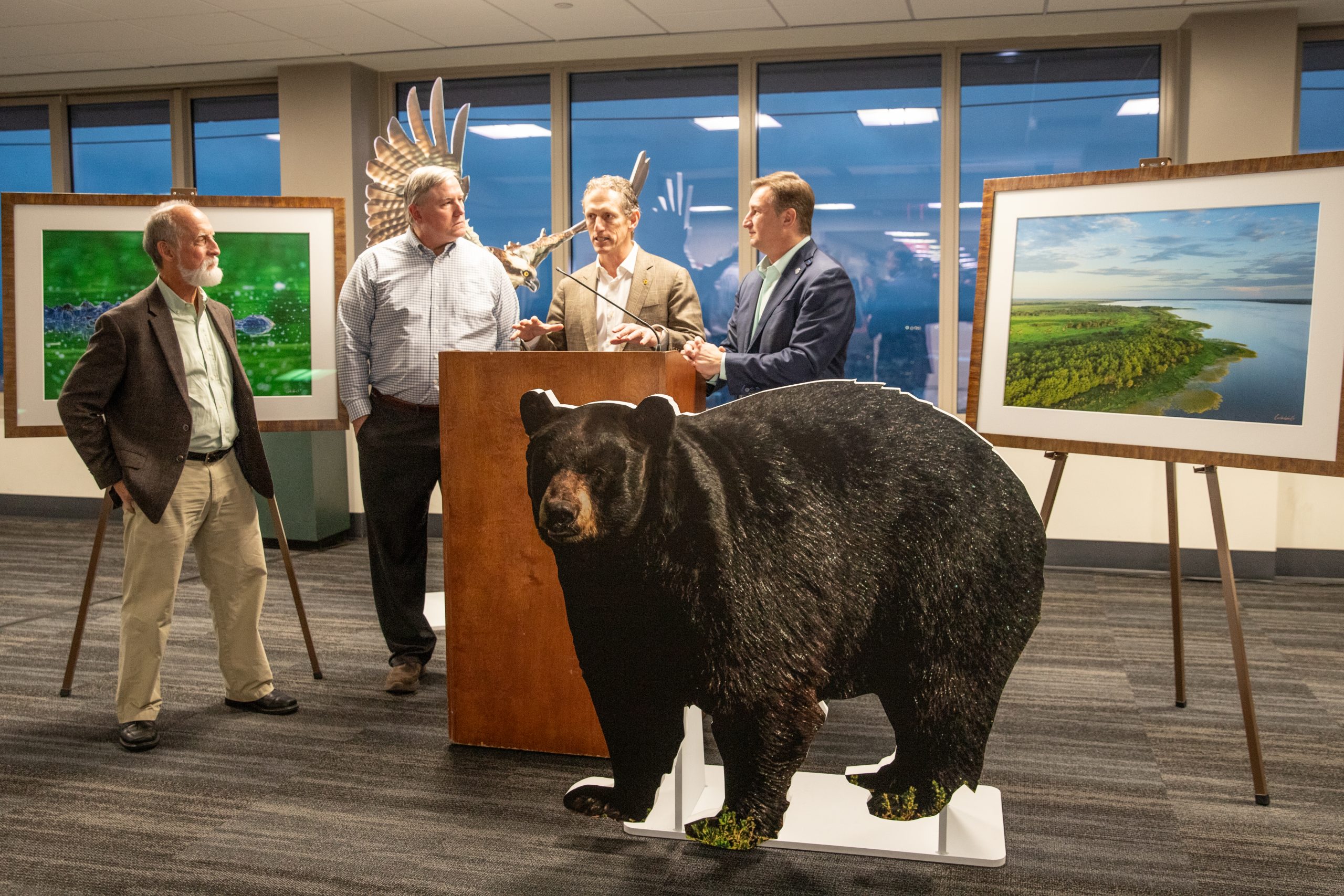The Florida Ecological Greenways Network
The Florida Ecological Greenways Network (FEGN) is a statewide database that identifies and prioritizes a functionally connected statewide ecological network of public and private conservation lands. The FEGN guides the Florida Office of Greenways and Trails (OGT) ecological greenways conservation efforts, and promotes public awareness of the need for and benefits of a statewide ecological greenways network. It is the primary data layer used to inform Florida Forever, Rural and Family Lands Protection Program and other state, federal and regional land acquisition programs regarding the most important ecological corridors and intact landscapes across the state for protection of Florida’s native wildlife, ecosystem services and ecological resiliency. It is also the key layer providing the science foundation for the Florida Wildlife Corridor.
“The FEGN is the key layer providing the science foundation for the Florida Wildlife Corridor.”
The FEGN database was created and is maintained by Center staff. Tom Hoctor, Center Director, has led the creation, revision and implementation of the FEGN since its inception in 1995, including policy work to support protection of the FEGN with multiple state federal, regional and NGO partners. Key project partners include the Florida Natural Areas Inventory, Florida Conservation Group, and Florida Wildlife Corridor Foundation, advisory group members who provide technical assistance and state agencies and foundations who provide technical assistance and funding.
Florida Wildlife Corridor Day 2024 at the Florida State Capitol.
Image Credit: Alex Freeze
One of the goals of the state greenways plan is to update the FEGN base boundary and priorities approximately every five years. The most recent update to the FEGN was completed in 2021, and additional updates are underway.
Primary goals of the update include:
- Revise priority areas important for biodiversity conservation based on new or updated data.
- Expand considerations of ecosystem services.
- Incorporate additional ecological connectivity models and ensure functional connectivity to other states.
- Address potential sea level rise impacts on FEGN priorities.
- Conduct boundary edits and data updates throughout the state.
FEGN Online Tools
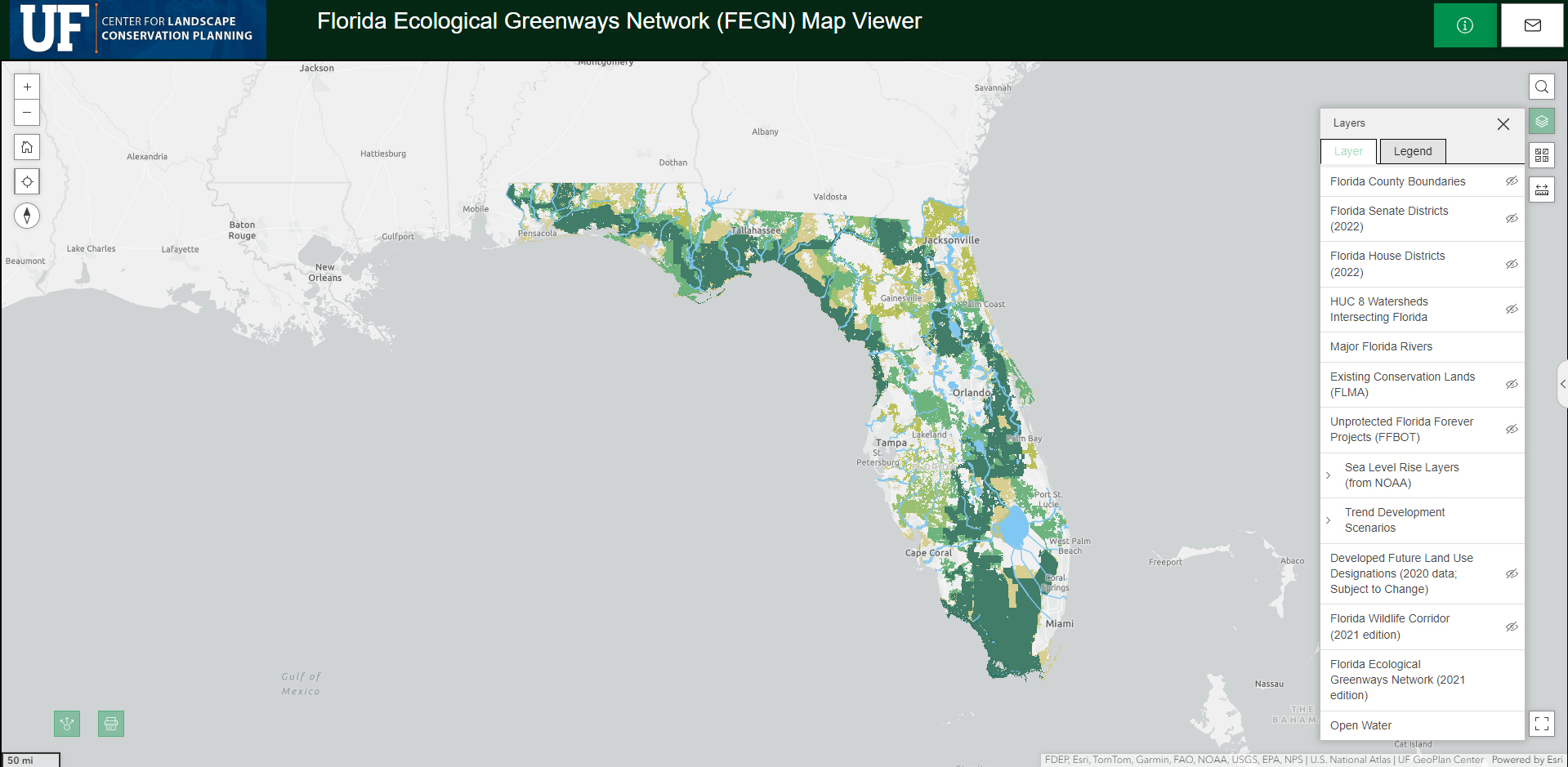
The FEGN Viewer
The FEGN Map Viewer is designed to provide users access to the prioritized statewide Florida Ecological Greenways Network. Together with the FEGN (2021 edition) data layer, users will find existing and proposed conservation lands, growth projections, political boundaries, sea level rise projections, and several reference layers. The top three priority layers of the FEGN have been designated the Florida Wildlife Corridor (Senate Bill 976). The Florida Wildlife Corridor data layer is also included.
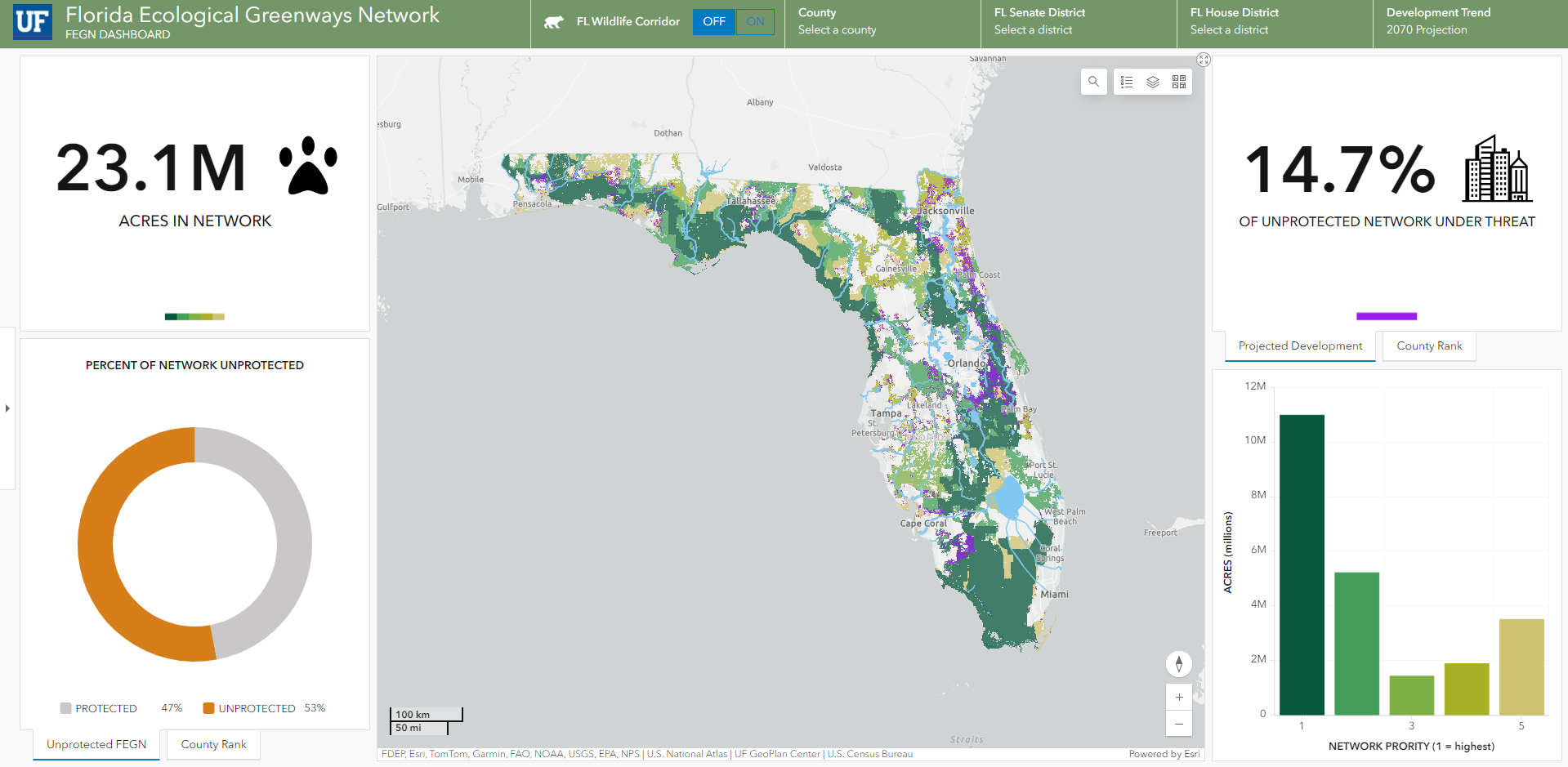
The FEGN Dashboard
The FEGN Dashboard allows users to explore opportunities and challenges associated with FEGN protection. Users can explore development trends, regional statistics for protected and unprotected land, and more.
The Critical Linkages of the Florida Ecological Greenways Network
The FEGN is composed of priority lands classified into 5 priority levels. Priority 1 lands are ranks for highest priority; without them major disconnects in the network would be present, hence their status as “Critical Linkages” These are a key component of the Florida Wildlife Corridor, which consists of FEGN priority 1-3 lands. There are 10 critical linkages within the network.
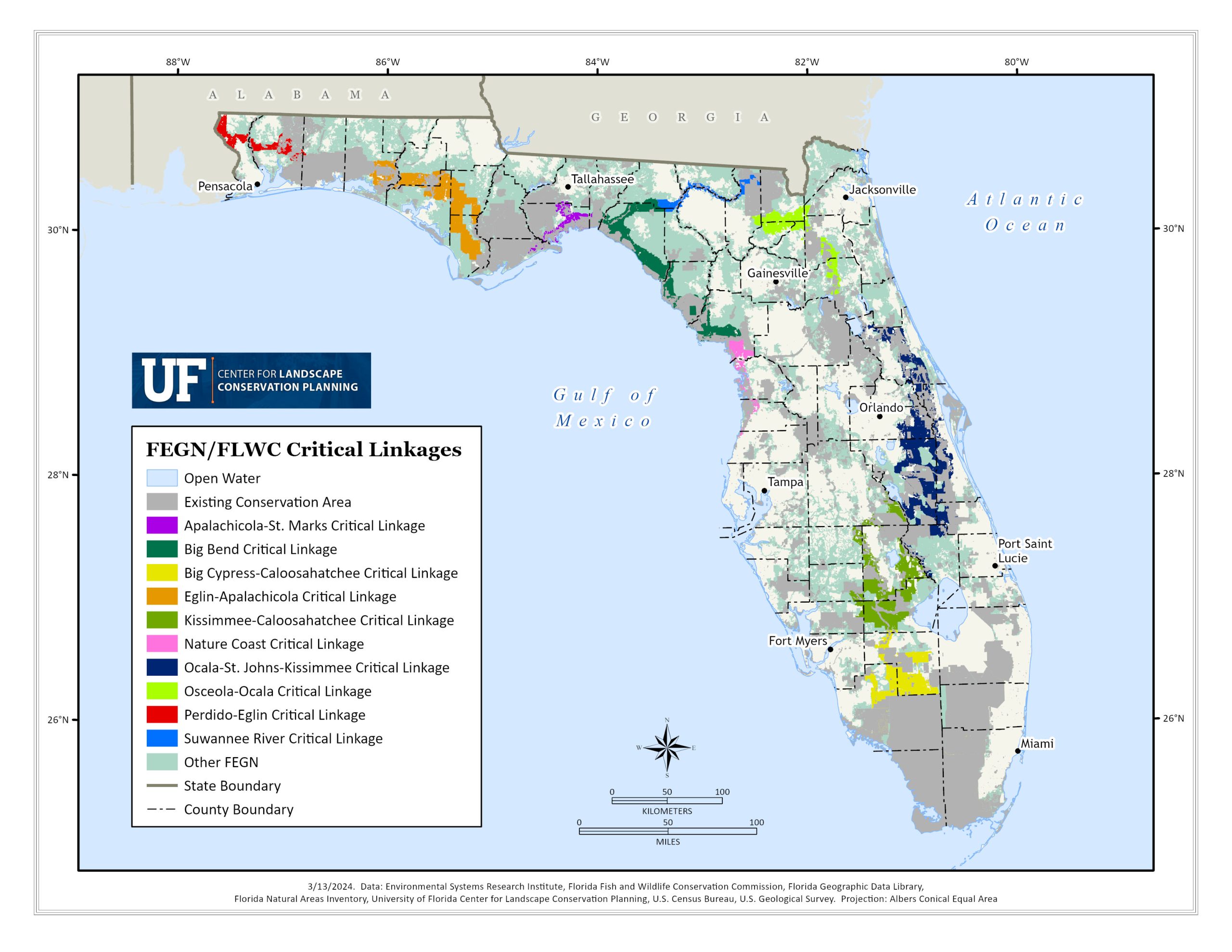
Learn more about each critical linkage
-
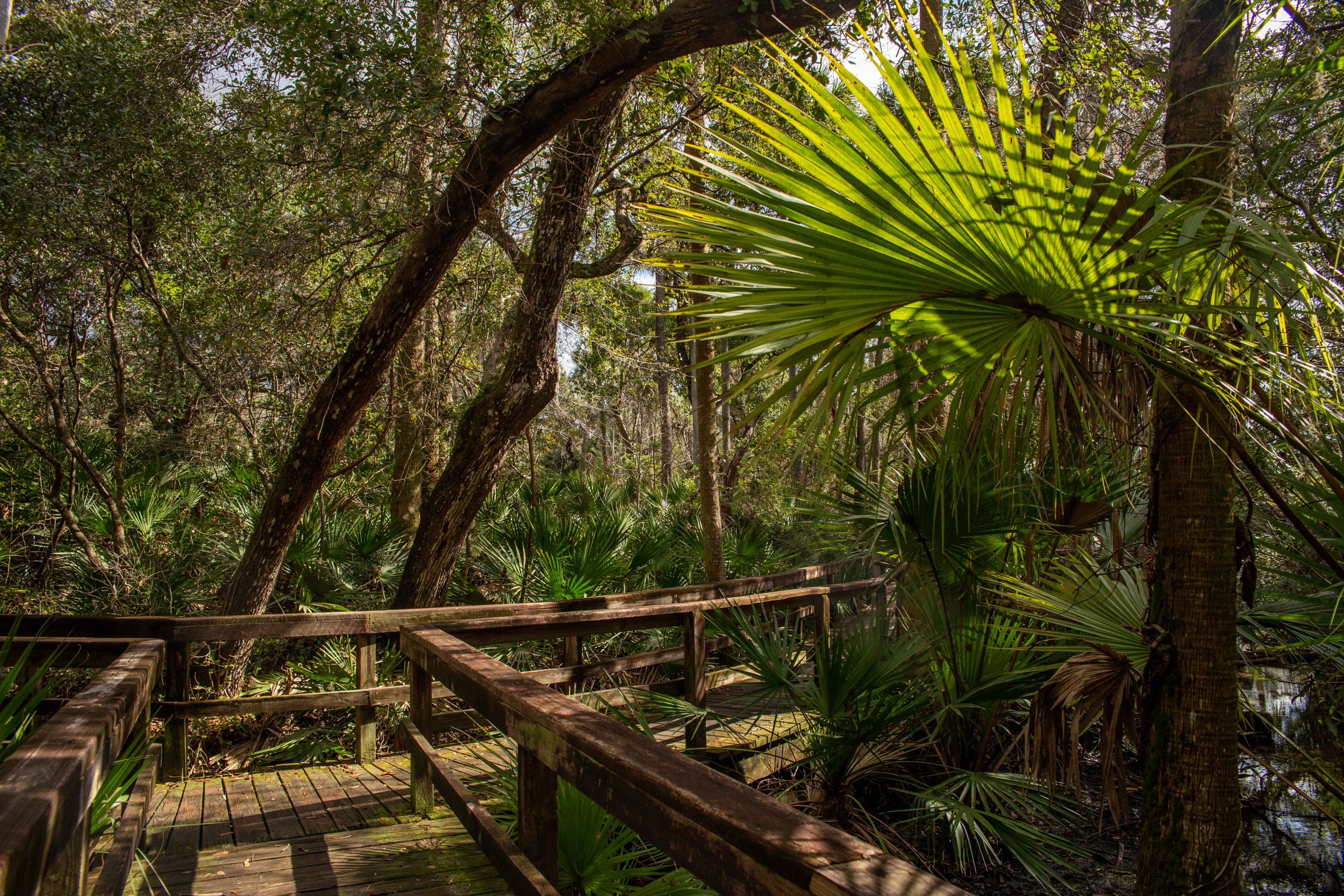
The Ocala – Osceola Critical Linkage
The lush green forests and brilliant blue springs of the Ocala-to-Oceola (O2O) Critical Linkage create a vibrant blue-green network across North Florida. Further protection in this linkage is essential in connecting central priority one land through Ocala National Forest, Camp Blanding Joint Training Center, and Osceola National Forest to priority lands towards the panhandle and…
-
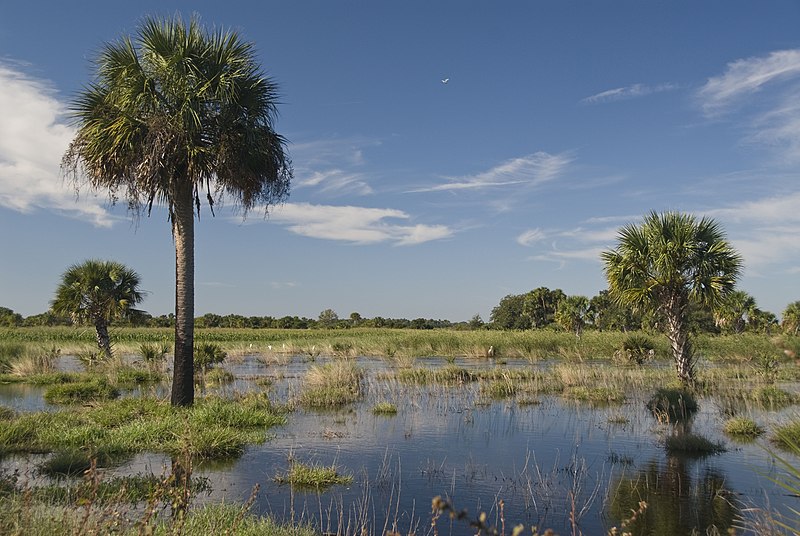
The Ocala – St. Johns – Kissimmee Critical Linkage
Spanning seven counties from Okeechobee to Volusia, the Ocala – St. Johns – Kissimmee Critical Linkage covers a large expanse of invaluable land for the Florida Wildlife Corridor and priority one lands for the FEGN. It encompasses a complex landscape of Florida ranchland, vast wetlands, and iconic river systems that provide invaluable flood, water quality…
-
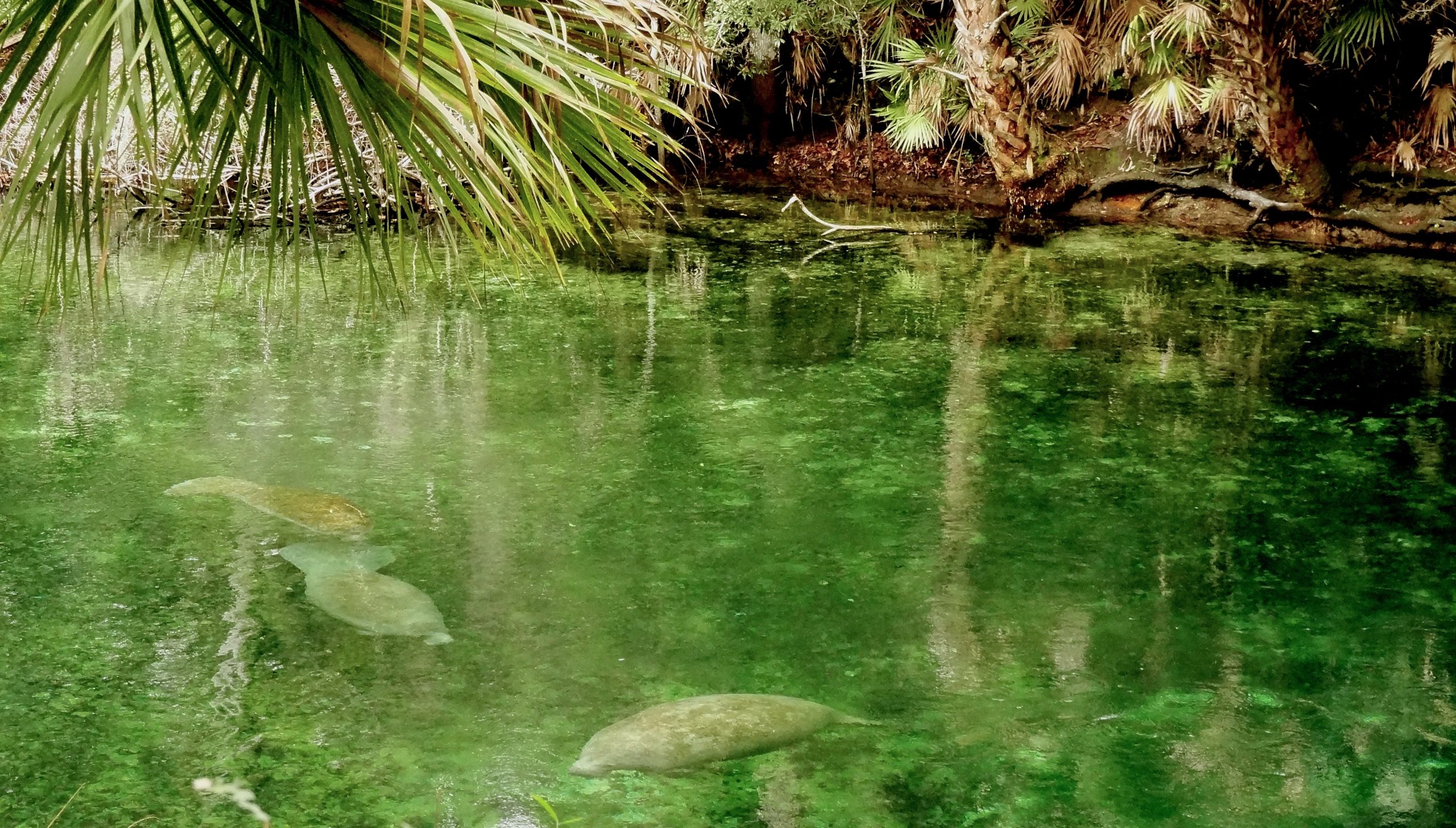
The Nature Coast Critical Linkage
North of Tampa, the Nature Coast Critical Linkage seeks to preserve gaps within the southernmost portion of Florida’s west coast that is a viable corridor for the Florida Ecological Greenways Network and Florida Wildlife Corridor. It would create a narrow yet crucial corridor between inland preserves and management areas and the coastal preserves and management…
-
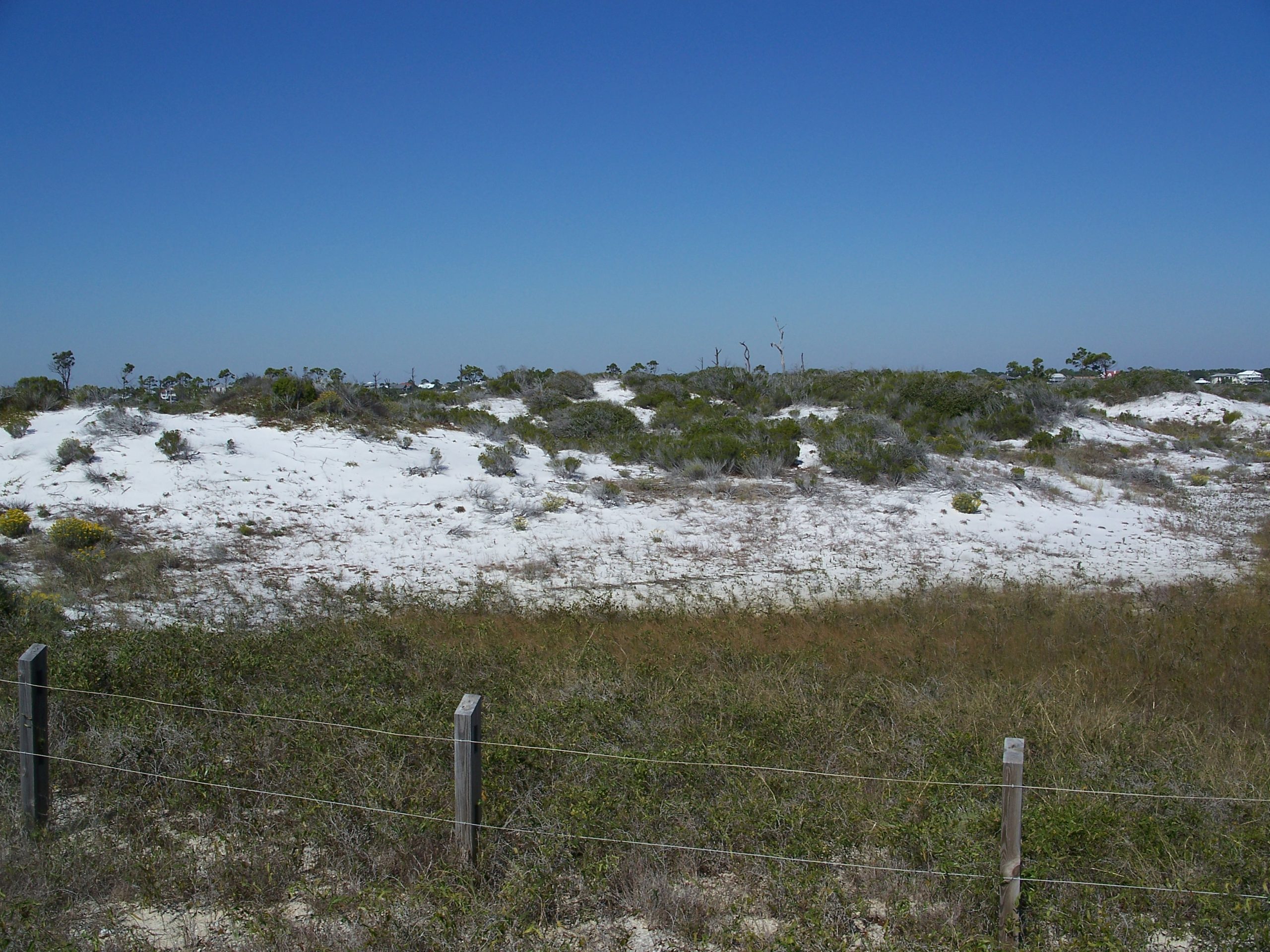
The Perdido-Eglin Critical Linkage
The Perdido-Eglin critical linkage is the western-most critical linkage in the state, serving as the link between the Florida Ecological Greenways Network and important conservation land in Alabama. It creates a corridor between Eglin Air Force base, and Perdido Wildlife Management area while also connecting Escambia River Wildlife Management area and Blackwater River State Forest.…
-
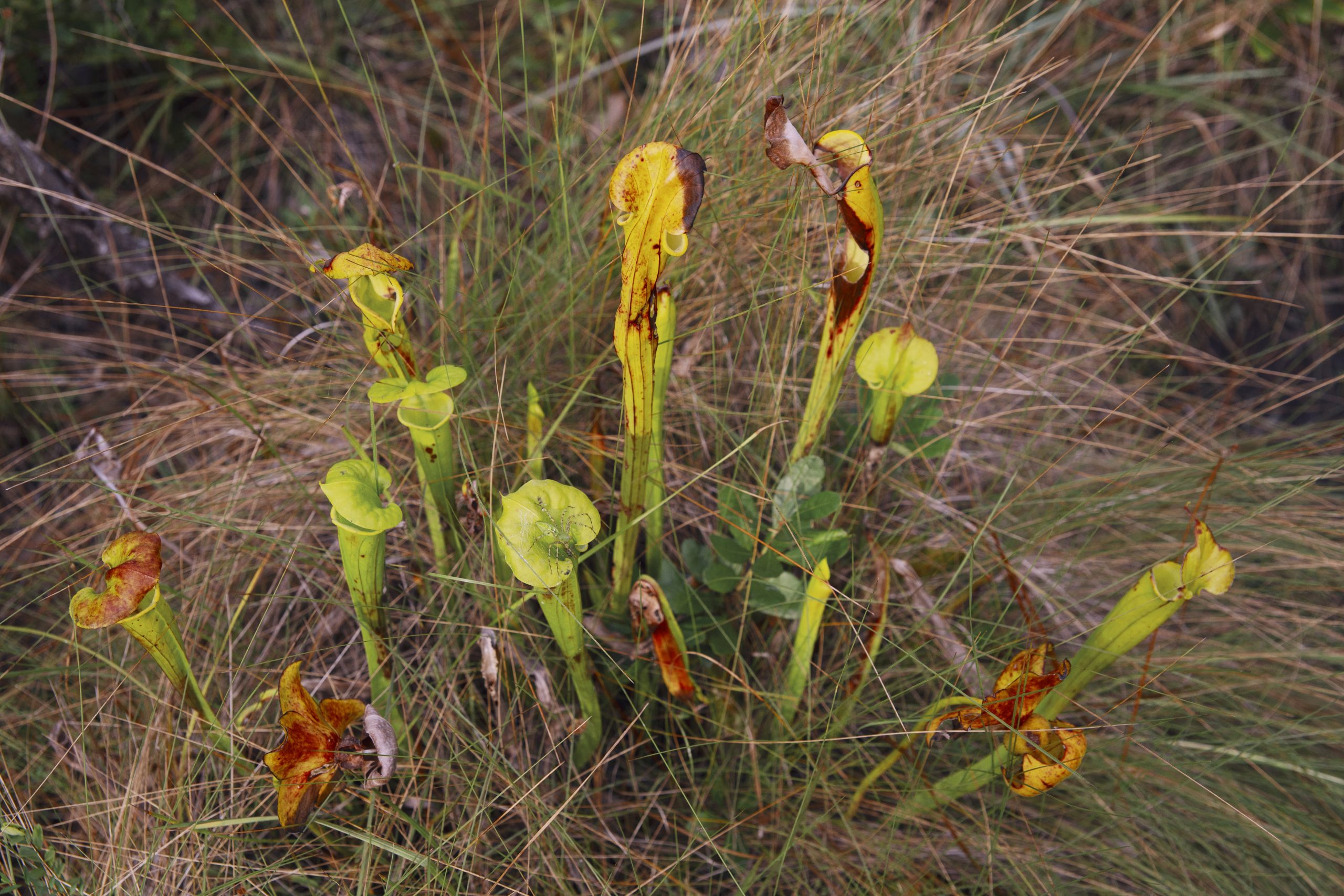
The Eglin-Apalachicola Critical Linkage
In the heart of the Florida panhandle, miles of undeveloped white sandy beaches, calm bays and barrier islands draw Floridians and tourists alike to iconic small beach and fishing towns along the Emerald Coast. However, this region is not just renowned for its emerald-colored gulf waters and pristine beaches. The Apalachicola-Eglin Critical Linkage and surrounding…
-
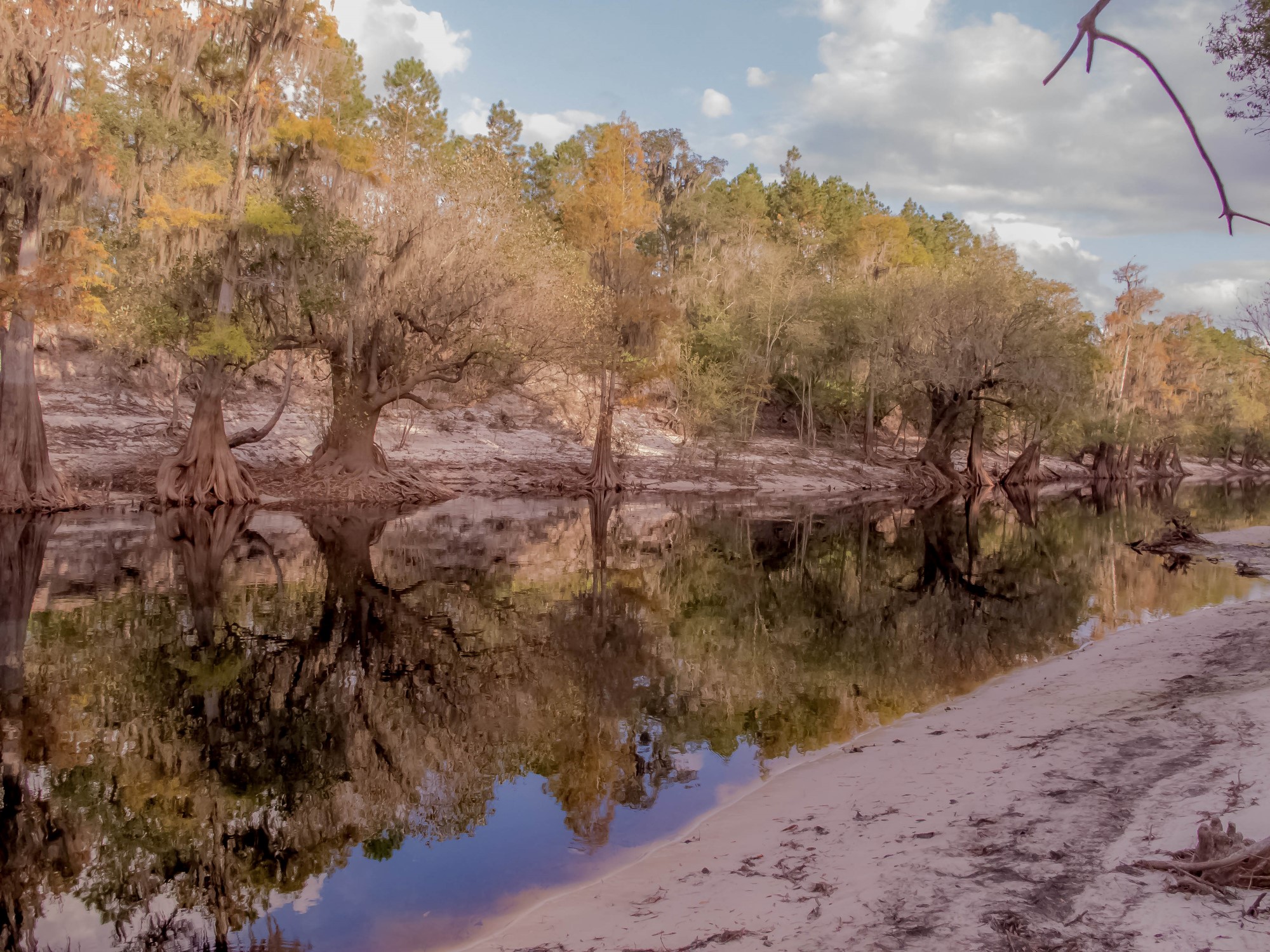
The Suwannee River Critical Linkage
From the Okeefenokee Swamps of Georgia, a river runs south into rural North Florida. This wild blackwater river winds for almost 260 miles through hammock and hardwood, fed along the way by swamps and springs, and eventually blends into the salt marshes along the Gulf of Mexico. This is the Suwannee River; a river rich…
-
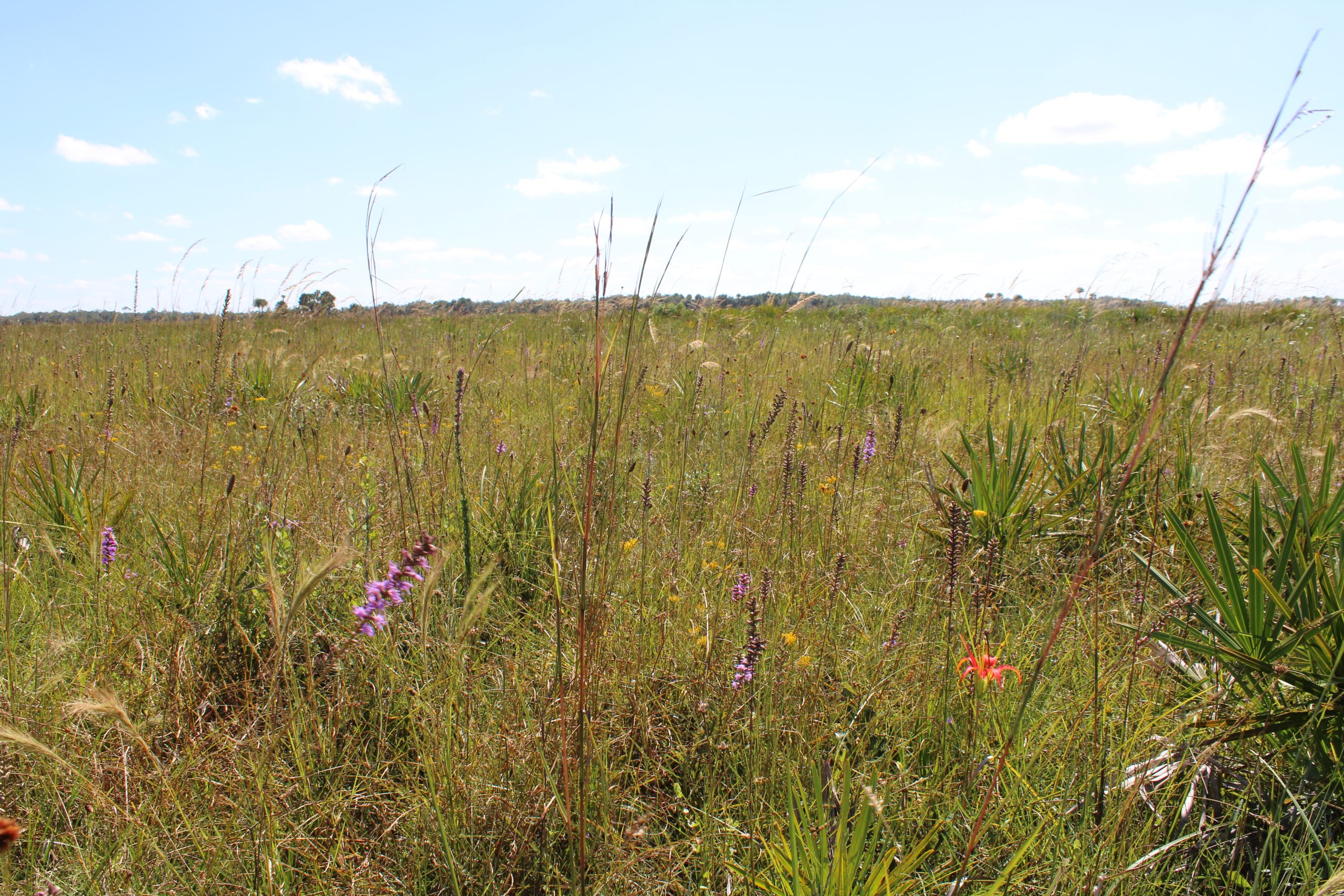
The Kissimmee-Caloosahatchee Critical Linkage
North of the Caloosahatchee River, a central connection for the FEGN and Florida Wildlife Corridor expands from the Babcock Ranch Preserve to Avon Park Airforce Range and Kissimmee Prairie. This is one of Florida’s great sentinel landscapes; where conservation areas, working lands, and national defense interests converge and collaborate to further conservation and military goals. …
-
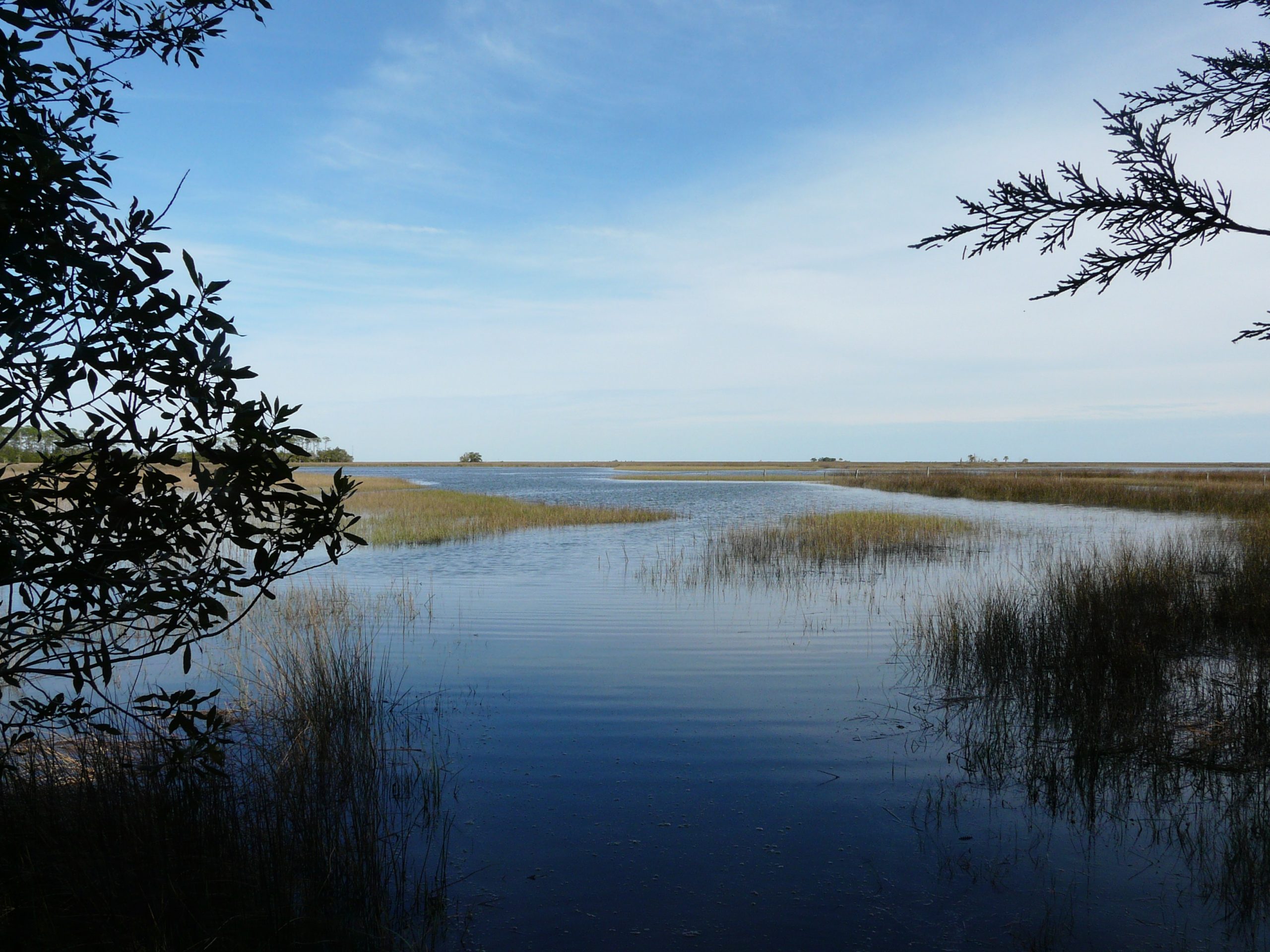
The Big Bend Critical Linkage
Situated in the Big Bend region of Florida, the “Nature Coast” lives up to its name due to the pristine ecosystems and the rural communities intrinsically tied to them. Spanning from the outstanding waterways of the Wacissa and Aucilla Rivers south to Waccasassa Bay and Goethe State Forest, the 100 miles of Big Bend Critical…
-
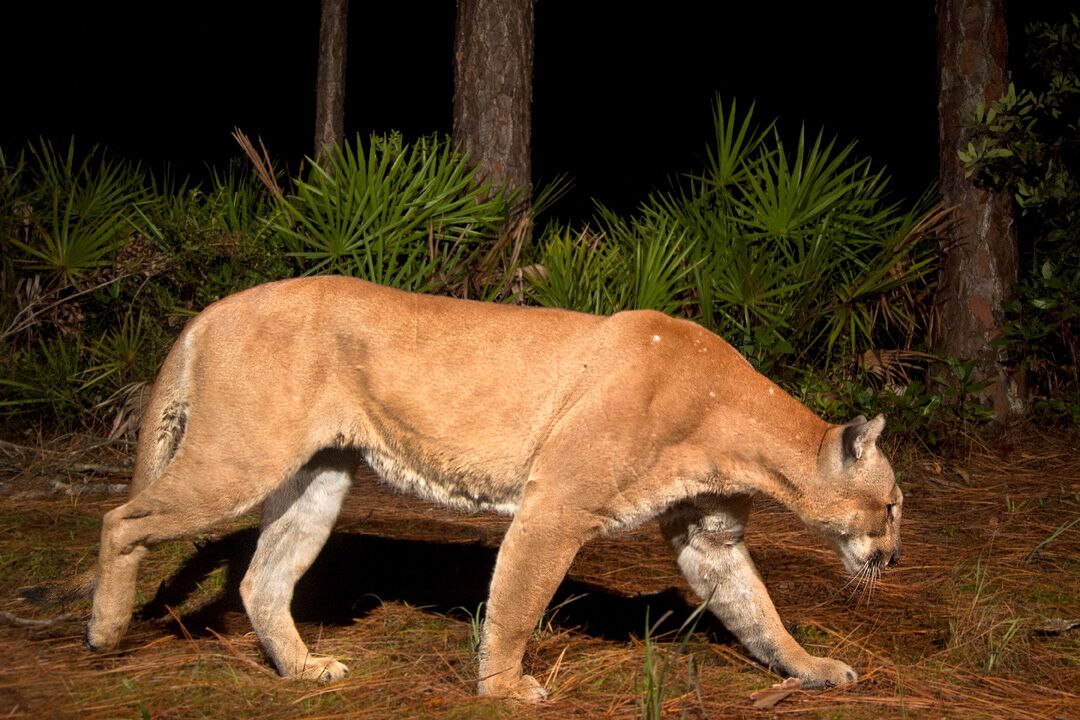
The Big Cypress-Caloosahatchee Critical Linkage
A unique mosaic of sloughs and cypress swamp, wet prairie flatwoods and other wetlands ecosystems across a region dominated by Florida ranchlands, the Big Cypress-Caloosahatchee critical linkage preserves the first link between the Everglades and the rest of the Florida Ecological Greenways Network. This critical connection has become well known for its importance to the Florida…
-
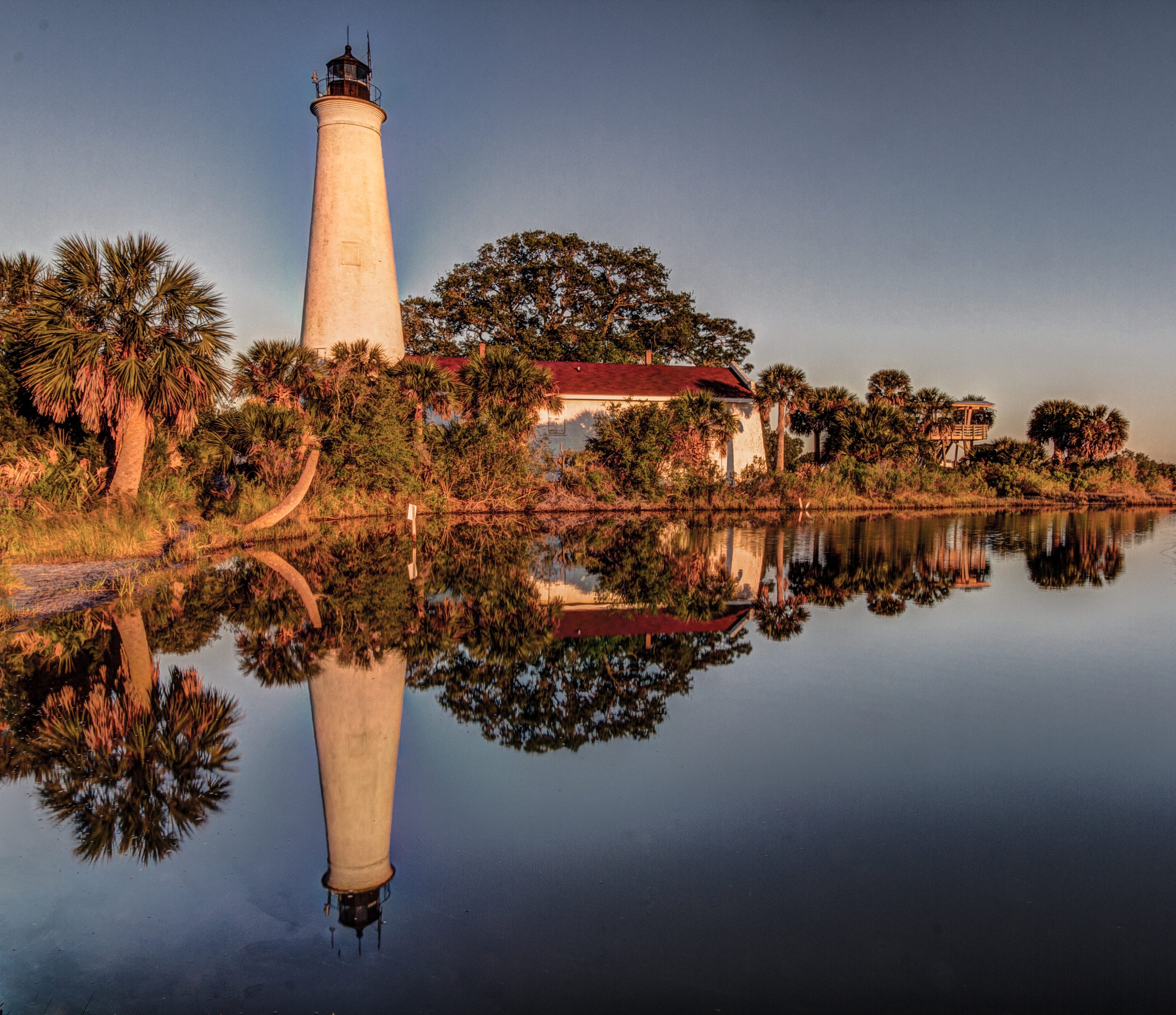
The Apalachicola – St. Marks Critical Linkage
In the narrow bend between Florida’s panhandle and the rest of the peninsula, Florida’s state capital was founded in 1824 at the then small town of Tallahassee. Now a major city home to over 200,000 residents, Tallahassee’s footprint continues to grow. The effects of population growth and sprawl from Tallahassee is one of the most…
Reports, Downloads and Maps
2021 FEGN Priorities 1-3 (The Florida Wildlife Corridor) Data Download:
2021 FEGN Priorities 1-5 Data Download:
